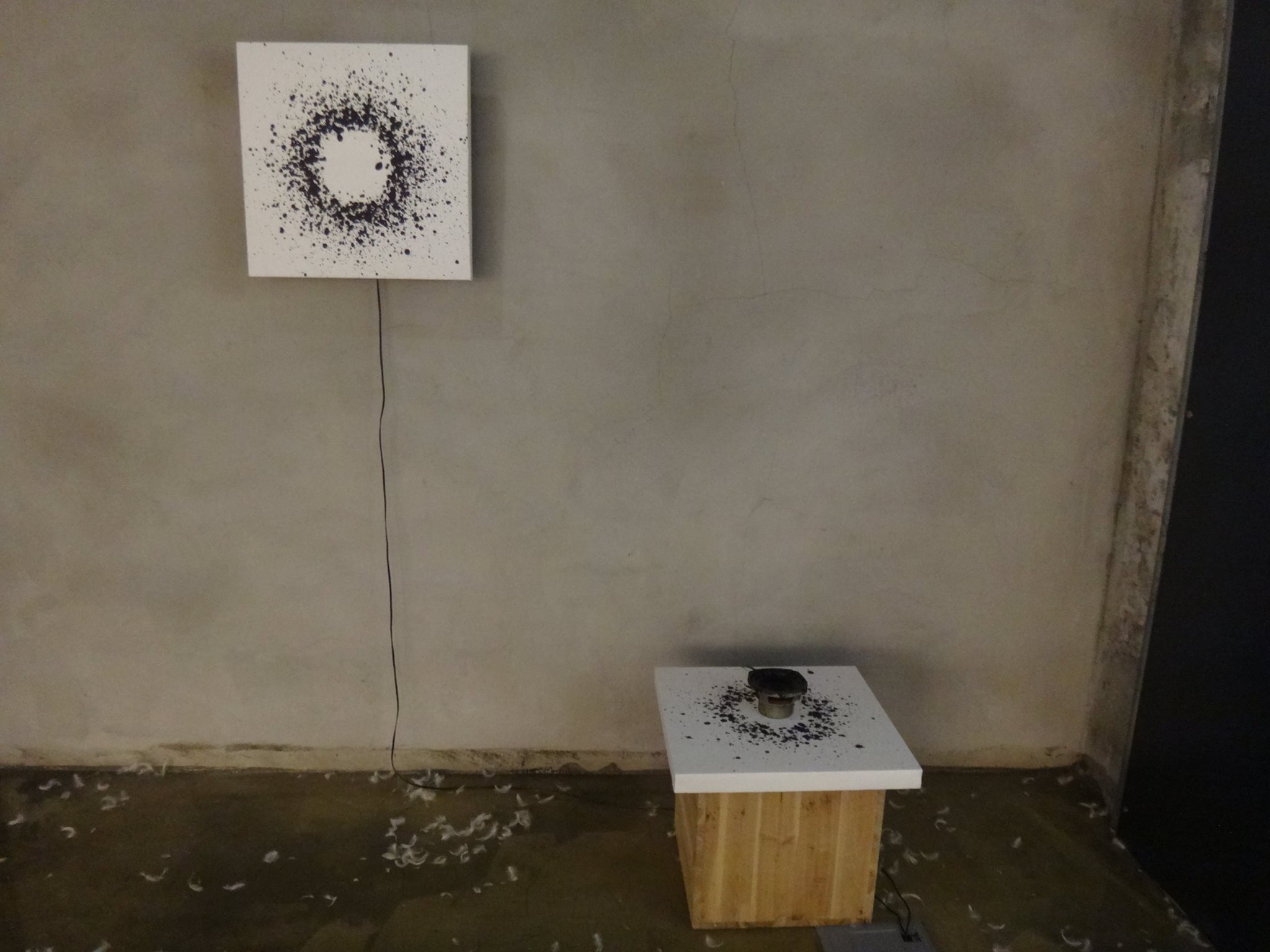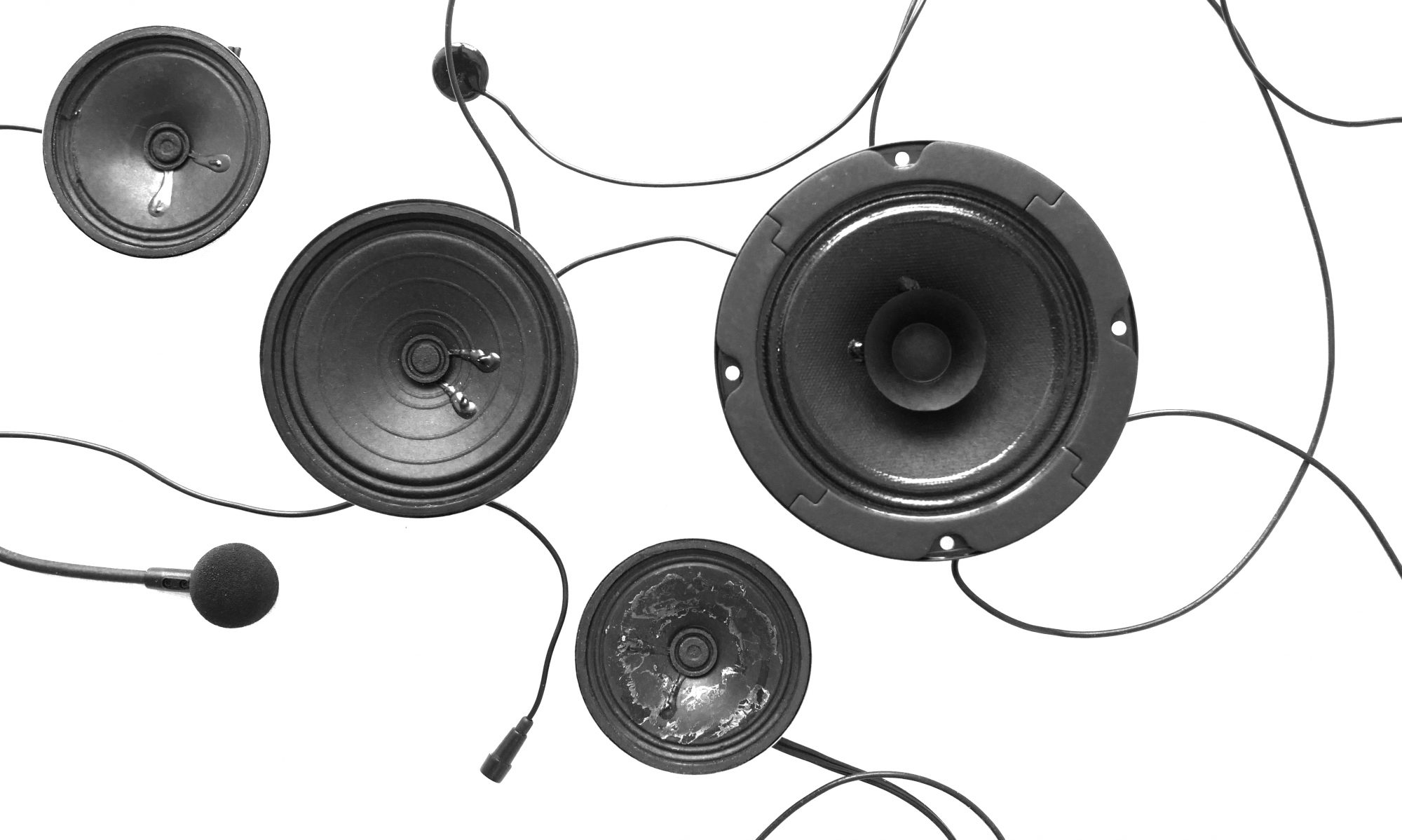
Before Simon Whetham begins his performance, he asks you to close your eyes. However, I could not help but open my eyes briefly a few times. I saw Simon walking around slowly, holding a cymbal in his hands. A tactile transducer was attached to the cymbal (Simon uses Dayton transducers, often also called exciters. If you want to know more, about what kind of microphones and loudspeakers he is using, have a look at the very detailed equipment list on his website). Larger sounds were diffused by a tactile transducer attached to the big metal ventilation system on the ceiling, resonating in different ways depending on the frequencies diffused by the tactile transducer.
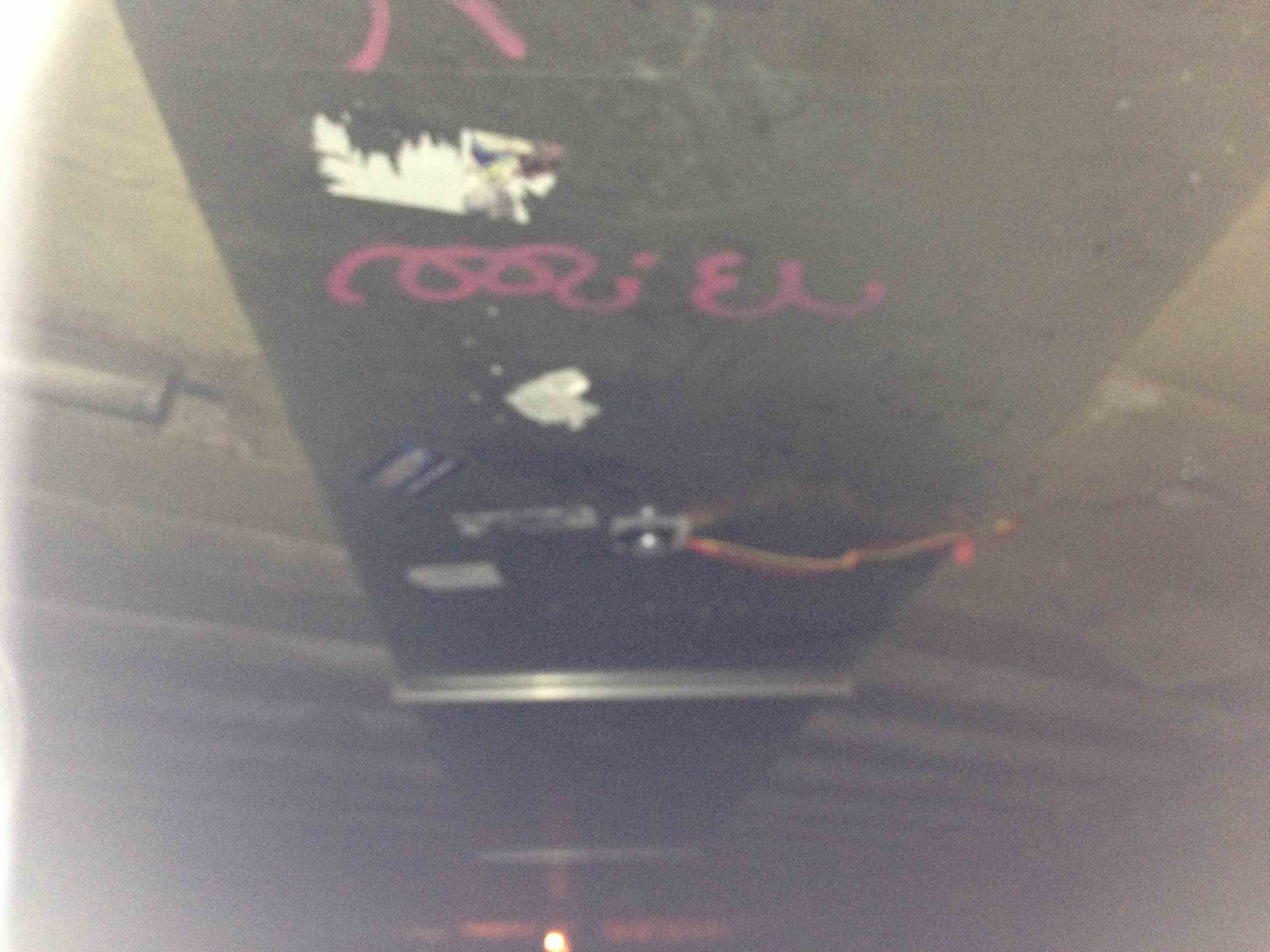

Every performance space is different of course, as are the objects you might find in such a space, so I asked Simon how he prepares for these performances. He told me that besides being experienced enough now to often know already what object might sound good, “banging and knocking on objects to test their resonance and which part is more resonant is essential. Also when setting up I will place objects in various parts of the room to test how each one works in the space, for distance and if they will even vibrate against another resonant object. But then this can change during the performance as I often have no control over where people sit!” And some of his favourite objects, such as the cymbal, just travel with him.
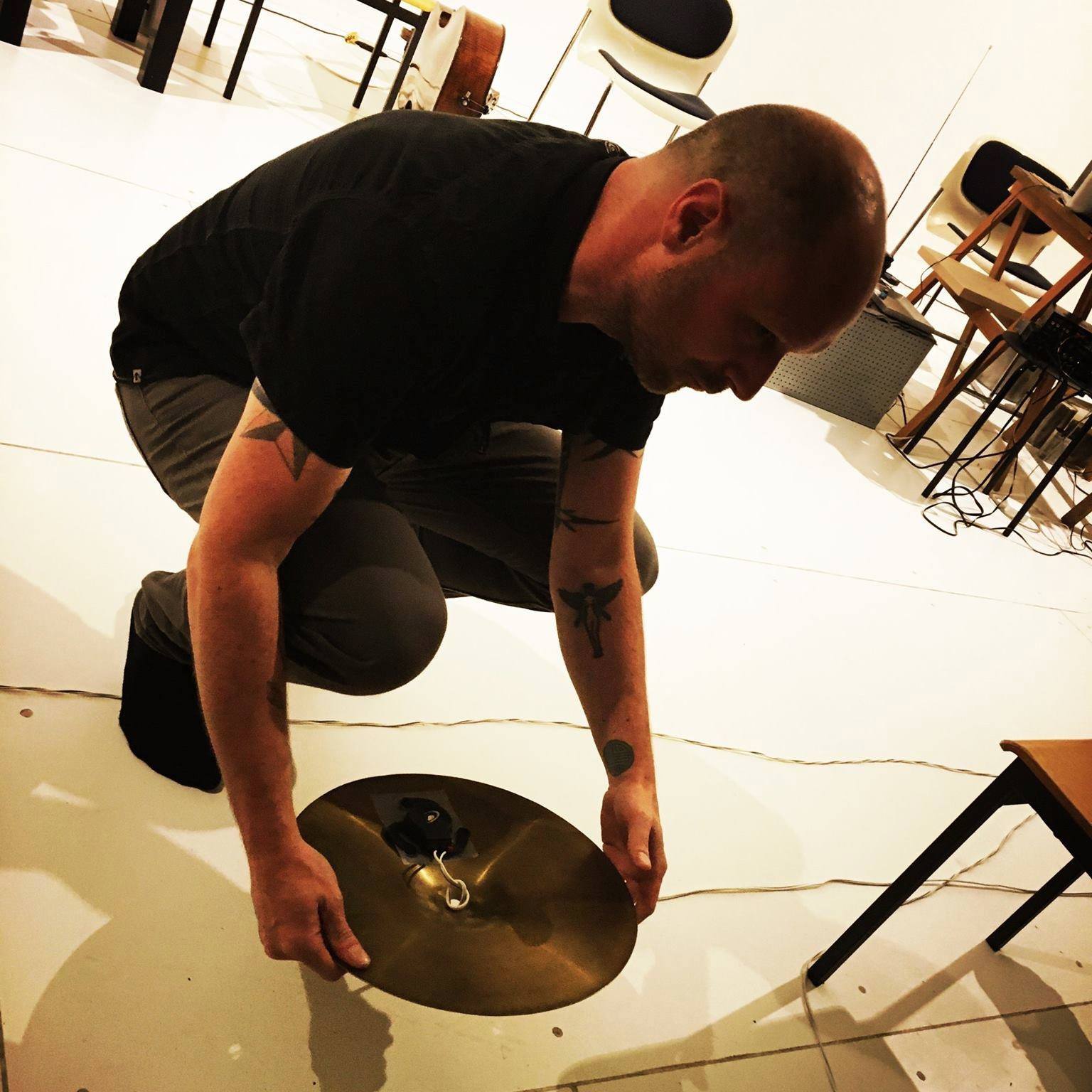
As an input, Simon uses pre-recorded sounds and recordings made in the performance space itself, but also produces many sounds live. For creating live sounds, he often uses a small loudspeaker cone: “I also started working with an open speaker as a sound source, either by playing audible sounds through it and then channeling them around the room or using inaudible low frequency recordings and placing objects inside the speaker. I like this approach, as field recorded low frequencies are often unpredictable in their volume level, creating an erratic ‘rhythm’ with the objects in the speaker or even throwing them out.”
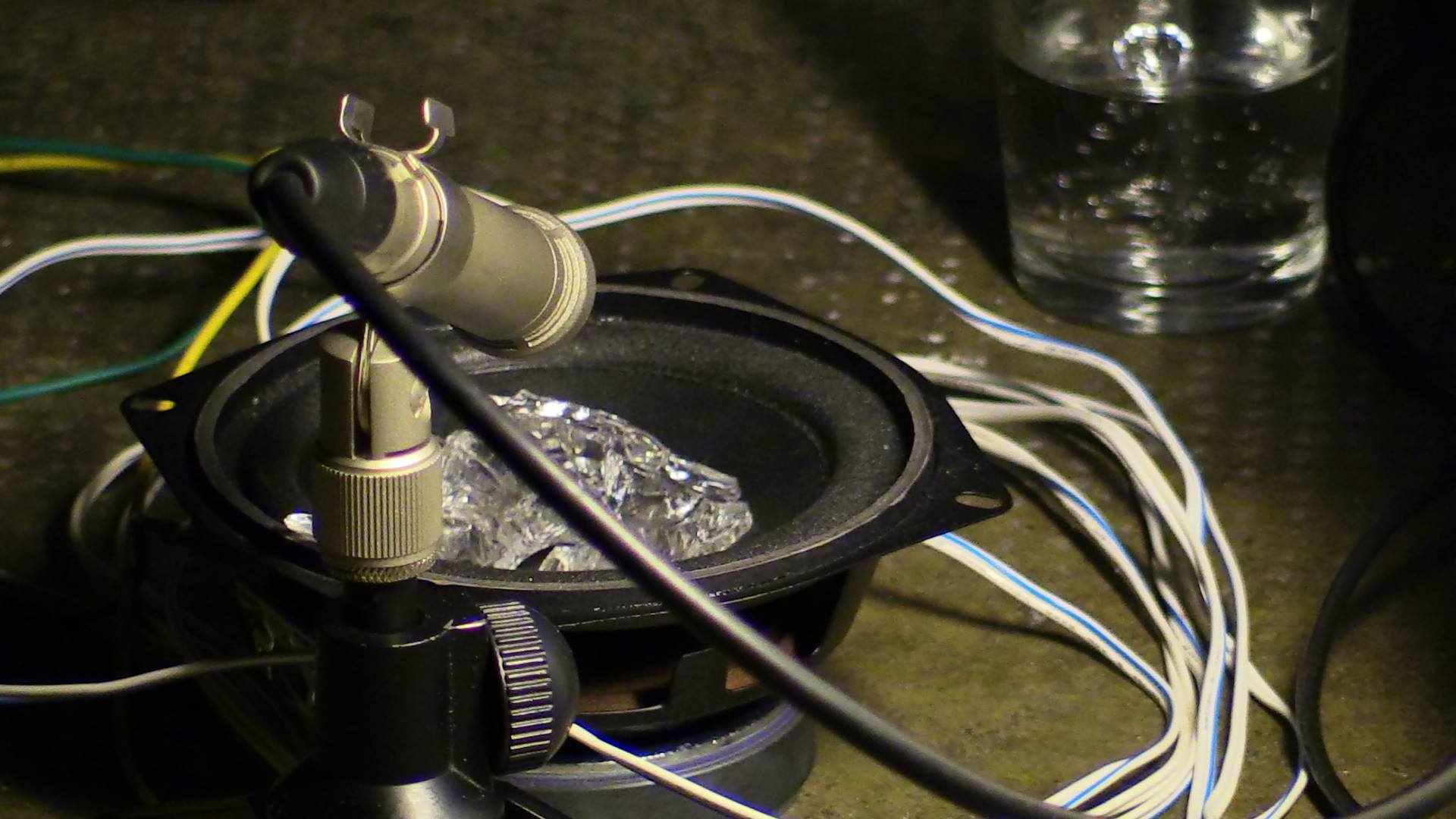
As a result of sending the same recorded sound to the differently prepared loudspeakers in space, there are now several representations in the room: one is the sound of the loudspeaker cone covered with, for example, broken glass or stones; the other ones are very similar sounds somewhere else in the space, but filtered by the spectral characteristics of this object. You hear beautiful reminiscences of the sound of scraping stones, scratching metal, or the electric noise made by a ventilation system. But all of them are surrounded by a sonic aura, which makes them less recognisable, transforming them into more imaginary sounds, not related to any existing things. Listening to a recording can of course never reproduce such a performance, but it might give you at least an impression of what kinds of sounds were used:
In contrast, in Everyday Emanations (Dead End) (2017) the sound source is more easily recognisable and plenty of visual cues reveal the source of the sound. Once again, Simon uses tactile transducers, this time attached to damaged car parts. He recorded sounds of traffic inside objects such as pipes, bottles and cans in the streets of Nakanojo (Japan) and these are played through the tactile transducers. Or in Simon’s words: “So ‘dead’ cars would play the sounds of ‘live’ ones.” This time your eyes should not be shut, since car lamps are used to light the space, turning on and off according to the volume of the sound.
An even more direct examination of the physicality of sounds occurs when Simon uses loudspeakers to create physical marks. The visuality of the performance—completely absent during the first performance I discussed—plays a crucial role now. Simon mentions the book Lines: A Brief History by Tim Ingold to explain more about these works: “Ingold describes two classifications of lines—threads and traces. I was led to consider traces of sound, or of action that makes sound. This ranged from retracing grooves cut into metal objects by the process of twine production to actually creating physical traces of sounds, to be displayed as visual representations.” In Trace of Water (2016), several metal wires are attached to a very small loudspeaker. A recording of cascading stream water in Wongol (South Korea) carries the loudspeaker through the sand, literally leaving its traces there:
Another work that also uses the sounds of cascades is the very poetic Vestiges of Discomposition (2016), developed on Mount Tsukuba in Japan. Simon used hydrophones to supply a live sound feed, “carefully positioning it to pick up the most energy from the flow. When transduced to sound through a speaker, this energy manifests itself as a low frequency that is unheard by human ears, but creates a strong movement in the speaker itself.” He now fills the different loudspeakers with earth and water, recreating the landscape the loudspeakers are placed in. “These ‘landforms’ mark every point where the stream makes more audible sound above the water, therefore acting as listening stations.”
In Trace of the Storm (2017), created at the Open Arts Project in Busan (South Korea) a recording of a storm is played through two loudspeakers. One is attached to the wood of a painting, the other is a speaker cone filled with Korean ink, and produces a painting similar to the first. “The sound continues to play through both pieces, but is heard in two different ways. The picture filters out low frequencies so you hear more detail, whereas the open speaker is almost inaudible, but creates another ‘drawing’.” This results in what could be called an action painting by a loudspeaker. In Simon Whetham’s works, the microphones and loudspeakers are not only transducing between air and electricity; they also translate all kinds of movements and sounds.
